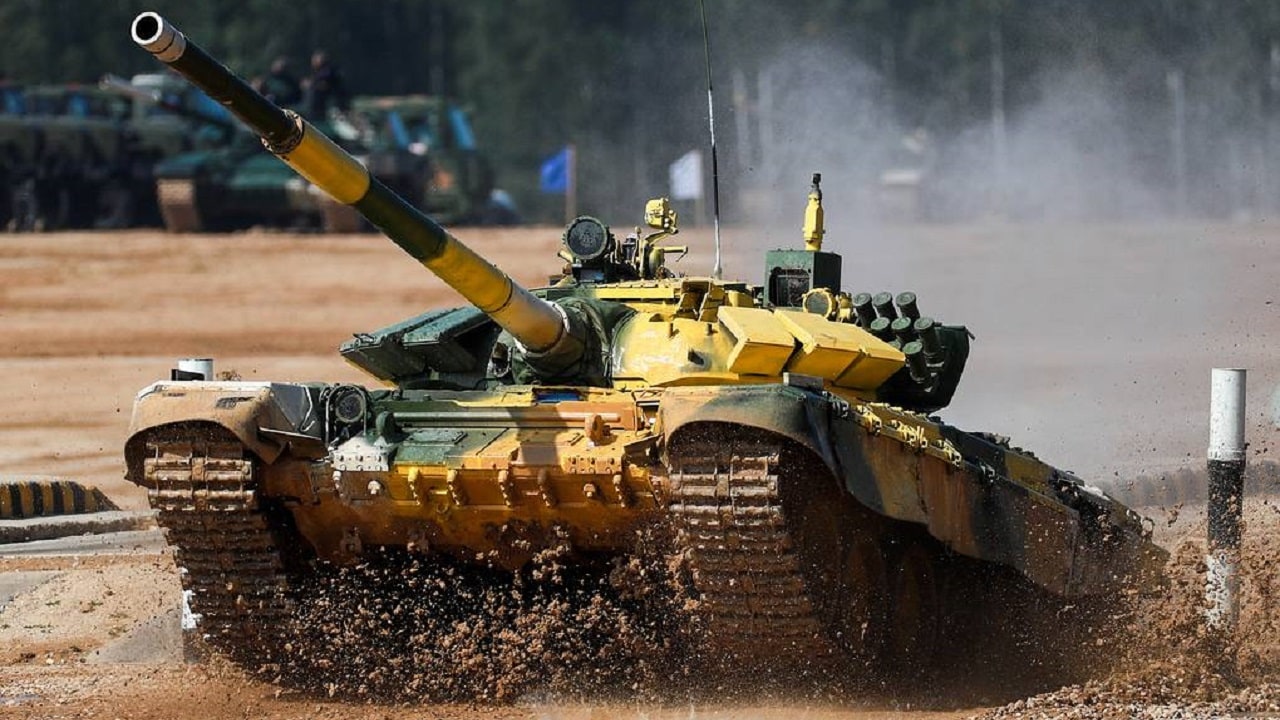Earlier this week, Russian Chechen Republic leader Ramzan Kadyrov boasted that the upgraded T-72 main battle tank (MBT) will easily blow its American M1 Abrams counterpart out of the water in combat.
Kadyrov noted that while Russia’s T-72 embodies “real power,” the Abrams is merely a children’s pedal car.
According to the leader, Russia’s upgraded armored vehicle “surpasses foreign equipment in combat power, control, protection and ease of use.
With it, any attack is like fishing on a yacht – a pleasure!” These exaggerated remarks coincide with reports that deliveries of Western-MBTs to Kyiv are imminent.
The T-72 Has a Problem
Even if Kadyrov’s dramatized remarks were slightly accurate, Moscow only has a dwindling number of T-72s left in its stockpile.
Over the last fourteen-plus months of warfare, Russia has lost nearly half of its T-72B3 and T-72B3M fleet. Some of these MBTs were captured, others destroyed by Ukrainian-launched anti-tank weaponry and a staggering number were simply left behind by Russian troops. It appears that Moscow has made little effort to refurbish and maintain damaged tanks, perhaps due to supply shortages caused by international sanctions imposed on the Kremlin. Instead, Moscow has turned to its storage of antiquated MBTs to fill in the gaps its armored corps needs.
Introducing the T-72 MBT
Derived from a design team rivalry in the 1960’s, the T-72 has evolved to become a critical component of Russia’s military. Two design teams were tasked by the then-Soviet government to create an enhanced version of the T-62.
Ultimately, the T-72 was selected as a cost-efficient alternative. By 1973, the T-72 “Ural” MBT entered service with the Soviet army. Up until the dissolution of the USSR, thousands of T-72s were produced.
The Ural was the most commonly used tank by the Warsaw Pact countries prior to the USSR’s collapse and was exported to a litany of nations including Finland, Iran, Iraq, Syria and India.
Specs and capabilities
Composite armor protects the Ural, allowing the tank to withstand any 105mm munitions at longer ranges than other MBTs. The T-72 is fitted with the 125mm smoothbore gun, a significant improvement from the T-62’s capabilities. Equipped with a 12.7mm anti-craft machine gun, the Ural can attack low-flying targets. Since its introduction to service, the T-72 has undergone several facelifts.
Currently, the latest iterations of the MBT, the T-72B and the T-72B3M are considered third-generation battle tanks. Prior to the outbreak of the invasion, Russia kept over 1,300 T-72B3s in service.
According to Business Insider, “The relatively new Kalina fire-control system with an automatic tracker of enemy tanks and its ballistic computer is top-notch. It has a laser range finder with improved thermal sights. It can fire the latest munitions such as armor-piercing sabots and high-explosive rounds.”
Although the newer variants are more formidable than their successors, the T-72 has run into major problems in Ukraine. In fact, some analysts believe that the Kremlin’s stockpile of its “top-of-the-line” MBTs is running low quickly. For this reason, the Kremlin has turned to its vintage armored vehicles to aid its offensive war efforts. Regardless of what rhetoric Kadyrov spews, the T-72 will not be a determining factor in the outcome of the war.
MORE: The War in Ukraine Is About to Explode
MORE: Does Putin Have Cancer?
Maya Carlin, a Senior Editor for 19FortyFive, is an analyst with the Center for Security Policy and a former Anna Sobol Levy Fellow at IDC Herzliya in Israel. She has by-lines in many publications, including The National Interest, Jerusalem Post, and Times of Israel. You can follow her on Twitter: @MayaCarlin.

